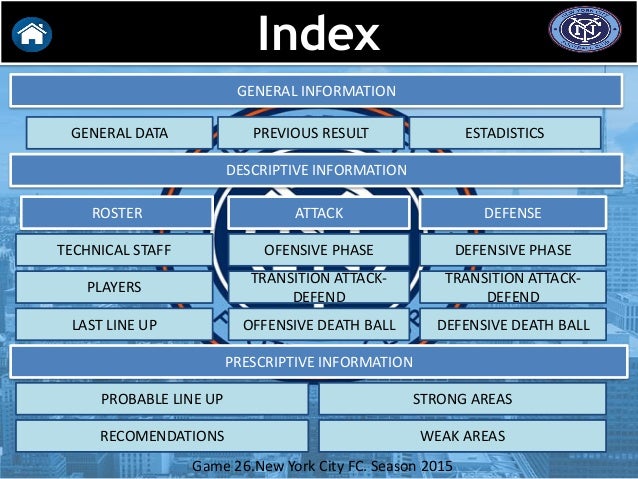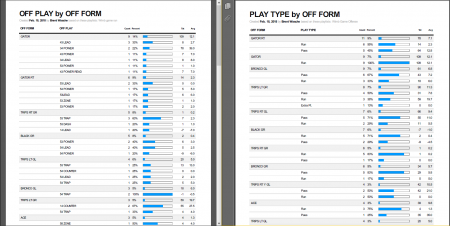Our free football scouting form was designed to help football coaches 'break down' an offense. First developed for a High School Football Defensive Coordinator, we liked it so much that we began to include it when someone purchased one of our Easy-Scout Football Scouting or Video Editing software applications, and now offer it free to anyone that requests it. Jun 30, 2018 free blank football depth chart template vinylskivoritusental se from Football Scouting Report Template, source:vinylskivoritusental.se By Marissa Posted on June 30, 2018 July 16, 2019 We are going to run by a lot of parts subsequently regards to Football Scouting Report Template which you must understand for your guide. Scouting Checklist & Basic Game Plan - Free download as Excel Spreadsheet (.xls /.xlsx), PDF File (.pdf), Text File (.txt) or read online for free. Football, gameplanning.

2015 NFL Draft Scouting Reports - Outside Linebackers Vic Beasley, Clemson - 3/11 Eli Harold, Virginia - 4/9 Hau'Oli Kikaha, Washington - 2/5 Shane Ray, Missouri - 3/25 Eric Striker, Oklahoma - 7/23 Shaq Thompson, Washington - 4/13 2015 NFL Draft Scouting Reports - Inside Linebackers A.J. Johnson, Tennessee - 6/28 Eric Kendricks, UCLA - 4/6. Once a player has been scouted, either specifically or as part of a general scouting assignment, you are able to view a scout report for him on the Scout Report section of his Reports screen. It is important to use a player’s scout report to help you to properly assess him and decide whether he would be a suitable signing for your club.
I’m a football scout who’s worked for both semi-professional and professional clubs you’ve probably heard of. In this series, I’m going to share with you everything I’ve learned after spending thousands of pounds on scouting badges, as well as working in different club environments, where most of my work was for free.

In this first post, I’ll be sharing some general knowledge of what I’ve learned, but I will be diving in deeper into specific positions later in this series.
Focus on yourself
You can’t jump from football super fan to Premier League scout overnight; you need to work your way up. After being turned down by a EFL League Two club, I gained the confidence to talk to clubs on behalf of myself. In hindsight, this ‘loss’ was a gain. My advice is to take every missed opportunity as a learning curve, as only you will see the benefits from your hard work paying off.
After this rejection, I did a few scouting pieces for an English seventh-tier club, which gave me the experience and confidence to believe in myself and push myself higher. Most semi-professional clubs will pay for your expenses, so whilst you’re not getting paid, you’re not exactly making losses.
My next step was working for a phoenix club you may have heard of, Hereford FC. I was greeted by their Scout Coordinator called Nic, who was really encouraging and believed in me. Part of Nic’s role at Hereford was to organise the match and travel fees, liaise with the board, and instruct scouts on what the club wants. Most clubs nowadays use this model rather than a Chief Scout, though the two are highly similar.
My role at Hereford consisted of two things; player scouting, and opposition scouting. Out of the two I prefer player scouting, but it’s important to explain the differences. Player scouting is simple. You must watch either specific or multiple players with the aim of gaining enough confidence on whether to sign them or not. This may take a few games, but is the easier of the two.
Opposition scouting is much harder, but it’s a lot of people’s cup of tea. It consists of watching another side in your club’s league or cup, in an attempt to uncover any tactical trends and weaknesses. For me, tactical philosophy is a great topic for debate, but writing a 30-odd page analysis in the pouring rain is often difficult.
At Hereford FC I covered these two topics, although the club had many other scouts. Then coincidentally, I had my details passed onto a Championship club. After a week of trial assessments, I was offered a scouting contract.
There we have it. At the start of the season I was rejected by many clubs. But if you believe in your own ability and are confident enough to ask clubs over the availability of a scouting role, something will happen. If you’re working on a volunteer basis now and are finding it hard, don’t worry. Soon you will see the hard work pay off and you will get what you desire for your hard work and effort.
Look past the goals and flair
We all love to see players like Barcelona talisman Messi and Neymar tearing apart defences, but world-class players have more to them than elite levels of flair and dribbling. You see, a world-class footballer must possess a world-class mentality. They must want more, to do more, to be different.
Something you would learn if you spent thousands of pounds on scouting badges is the four-corner scouting model. This model provides a simple way to categorise talent. The four pillars are these; Technical, Physical, Psychological, and Social.
A player that ticks all four of these boxes is Tottenham and England’s Harry Kane. But one box was ticked from back when Harry was a kid: psychological. Let’s look at some quotes by those who had a part in Kane’s meteoric success.
“For me, the quality that made him stand out as a youngster was this incredible self-belief. What he was he was very single-minded. He always knew precisely where he wanted to go.” – Les Ferdinand.
As Les Ferdinand said, Harry’s self-belief really drove the other three components of his game to the top, but this is only possible with a player who is highly motivated and professional. Les isn’t the only one who noticed his incredible mindset from a young age.
“I saw him walk through the door [at Tottenham] as a 16-year-old and had the pleasure of working with him for four years while I was on the staff and he was a fine young man. You could see from the day he walked in he had a real desire to improve himself as a footballer and the one thing I’d say about him, which unfortunately you don’t say about a lot of young footballers, is that he had a passion for the game. He loves football, he loves playing, he loves scoring goals.” – Clive Allen.
Another statement from a highly respected ex-professional and coach. It delivers the same message: Kane was a highly motivated young man who wanted to succeed. This desire is common among other world-class footballers.
Look at Cristiano Ronaldo, Leo Messi and Ricardo Quaresma. At one stage, these three wingers were considered to be the hottest prospects in the world. In their teens, they were all on the same level of ability. But only two of the three have launched themselves into absolute stardom. What went wrong for Quaresma? Senol Gunes, one of Ricardo’s coaches at Besiktas, said this:
“He is a very hard-working player who loves his job. Sometimes he finds it difficult to control his emotions, but we are working on a fix for this.”
This was a public statement whilst he was at the peak of his career, yet his mindset was still holding him back. Let’s see what his mindset was like as a youngster.
“I didn’t have patience at Barcelona. I couldn’t bear being on the bench. It was an idiotic attitude. I made bad decisions at key moments in my career. I wanted everything too quickly, and that ended up harming me.” – Ricardo Quaresma.
This personal admission of his own personality as a youngster is shockingly honest. But it’s the real reason behind his disruption of stardom. The main component of ability is psychological strength; the ability to want more, and to work hard for it.
Pay attention to stats
While you can spot a great player from the naked eye alone, statistics and data visualisation can make this job much, much easier. Data visualisation is a simple yet powerful tool. Google defines it as “a chart, diagram, picture, etc. that is created as a visual representation of information.”
As big data ventures into the beautiful game, clubs and scouts alike have acquired these tools to strengthen their confidence and knowledge on a player or team. I’m going to continue to look at Kane, as he is the complete package of the four-corner model.
The above data visual isn’t the best at all, given it took me less than two minutes in Microsoft Excel. However, it’s powerful, and can be used to illustrate the strengths of a player to a chief scout or director of football. With visuals we can use different models to compare different players based on the same strengths, all backed by statistics.

It is important to note from the above visual that just because two players you’re watching play in the same position, it doesn’t mean they’re the same. You can’t compare Kante to Xabi Alonso for example, as even though they occupy the same position they have very different roles.
It is important to pay attention to stats, but it is equally as important to have an understanding for the player you’re scouting. Statistics can be manipulated to serve an opinion, in football and in other topics.
Kane and Salah are two of the top strikers in the world, but they’re so different. It’s obvious to everyone why and how they’re different. Kane is a deep-lying forward who looks to bring in his team into the attacking phases and create chances for himself by dropping deep, whilst Salah is a mercurial in-behind-the-defence type.
It is important to listen to your chief scout or director of football. Try to get them to be specific on the mould of player they’re after, as simply scoring goals isn’t enough.
What’s next
Whilst this article has been brief, I mentioned in the opening section about how I’m going to dive deeper into each specific position and how to be successful in scouting them. I plan to look into different strains of goalkeepers, full-backs, centre-backs, holding midfielders, central midfielders, wingers, attacking midfielders and strikers.
In this series, we will also look into how to scout your opposition. From formation and tactical trends to throw-ins and corners, this series will look to answer any question you may have.
Feedback on what you’d like would be great and incredibly helpful, so tweet me @Xanoriah to let me know what you’d like to see.
If you love tactical analysis, then you’ll love the digital magazines from totalfootballanalysis.com – a guaranteed 100+ pages of pure tactical analysis covering topics from the Premier League, Serie A, La Liga, Bundesliga and many, many more. Buy your copy of the February issue for just ₤4.99 here, or even better sign up for a ₤50 annual membership (12 monthly issues plus the annual review) right here.
Here’s a nice little Checklist for Scouting Your Opponents. I honestly wish I can remember where I found this. I stole the basics of it from someone years ago, and have added/subtracted to/from it over the years.
Football Scouting Report Template
What is our opponents basic philosophy offense / defense

Starting line-ups offense / defense
Purchase and bring back two programs.
Purchase local newspaper.
Who are their dominant players, numbers, etc.
Snap count
Does our opponent like to stem their fronts
Base to Blitz ratio / defense.
Get all numbers on personnel changes offense / defense.
Did you notice any injuries
Football Scouting Report Template Pdf
Sideline demeanor.
How does our opponent handle sudden change?
Punters number.
Punters longest punt.
Kickers number.
Kickers sustained distance kicks.
Furthest pre-practice field goal made.
Punt returnee’s numbers.
Kickoff returnee’s numbers.
How good do you feel their deep snapper is?
Is the deep snapper consistent with his snaps?
Who’s their best returnee’s name, numbers.
Which players do you feel we can exploit offense / defense?
What is their sideline organization? Which side off the bench does the offense and defense report to when coming off the field?
What yard line do they go into their goal line package?
Did you notice any trick plays?
In pre-game warm up to they come out in their game jersey’s?
Football Scouting Report Pdf
When do they come out in game jerseys?
Primary penalties and problems.
Defensive hand signals.
Pre-game plays and routes.
Any problems getting aligned?
Free Printable Basketball Scouting Report
Any hand signals used by offensive receivers?